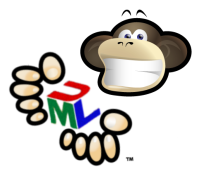Rodolfo Campero
Interesting new features
Yesterday I added two new features to MonoUML, which I think are very useful when you are trying to understand a library: showing the generalizations and the specializations of a classifier in a diagram.
Let's say you are trying to understand the way actions work in MonoUML. An action is something that can be performed on a diagram or on a diagram element; you can get a list of the actions available for a given element just right-clicking over it.
Lets continue with the example. The first thing we do is to reverse engineer the library MonoUML.Widgets.dll; then, using the options in the menu we create an empty class diagram, and then we drop the class ActionBase:
| Using the right click we get an option that shows all the specializations of the current classifier: |  |
The derived classes appear in the diagram. After reorganizing the diagram and repeating the process for the newly added classes, we obtain all the derived classes:
I think this is a neat feature, and hope you enjoy using it. As soon as I get some spare time I'll implement a similar feature to show all the implemented interfaces and all the classes that implement a given interface.



